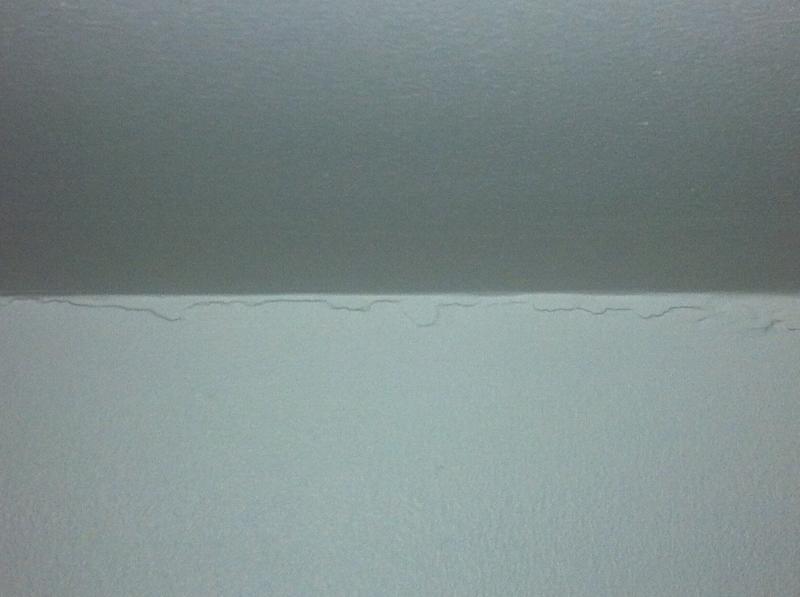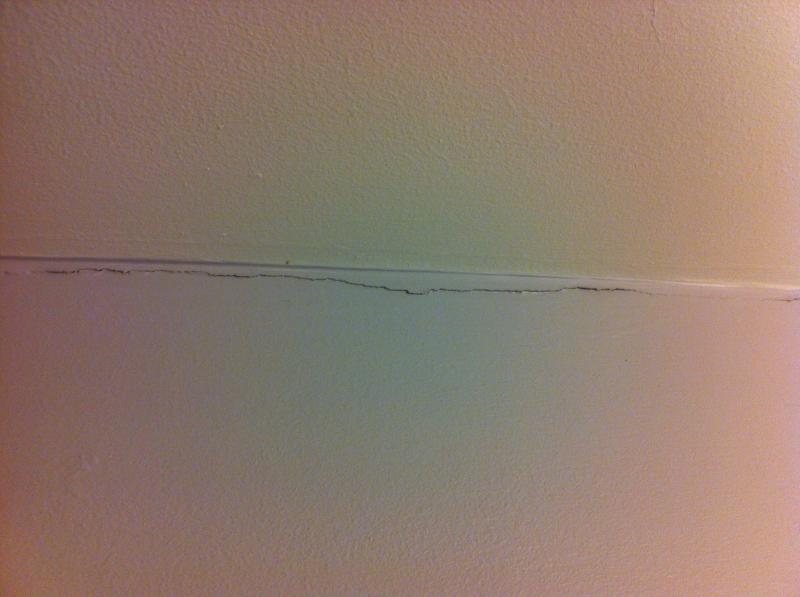Hello I was hoping someone could help me. We recently moved into a detached house of brick/block construction. Some of the walls internally have wave like cracks of plaster coming off the walls near the scrim cloth/ ceiling joints. They are not big 1 inch at the biggest one, but they are really unsightly!! Does anyone have any experience of this type of problem? I was thinking dig it out along the cracks not disturbing the scrim and fill with easi-fill and sand flat. Would this be the way deal with it? Thank you
You are using an out of date browser. It may not display this or other websites correctly.
You should upgrade or use an alternative browser.
You should upgrade or use an alternative browser.
Plaster problems at ceiling joint
- Thread starter Jim55
- Start date
Sponsored Links
Hi, thanks for taking time to reply. I really am not sure . The house is 12 years old and several walls are like this at the top. There was little or no upkeep on the house in that time so I thought it was maybe do do with settlement, although I have no experience with it. They are scraped off quite easily leaving a solid wall underneath. Here is a picture of a wall in downstairs hall - it's worse here.
Is that artex on the ceiling? It looks like it when i enlarge the pics. Try a scraper and carefuly remove the "snotty bits" along the ceiling line, then as you say, sand down or fill.
Sponsored Links
Some of the walls internally have wave like cracks of plaster coming off the walls near the scrim cloth/ ceiling joints
Is there visible evidence that scrim or a tape has been used?
I'd have said with just looking at the pictures, that it looked like there was none. The cracking is quite pronounced.
Hello, thank you for your reply. I have scraped some away and there is mesh underneath. The plaster lower down the wall is solid - no hollow sounds when I tap on it.
That's good news.
As roughcaster advises will clean it up.
Ok Jim, thanks for the info. Looking closely at the pics, I think those cracks are caused by slight movement/shrinkage, between the solid wall and the plasterboard ceiling. You say the plaster on the wall below the cracks is solid, and you know the joint is taped because you can see the scrim tape, so that's good,, what colour is the scrim by the way,, hessian coloured?
Anyway, this is what i'd do.
Gently chip away the protruding strip of plaster, give it a good brush over to remove any dust etc, then give the patch a good damp down/spray with water, even brush on a little pva if you have some. Mix up a small amount of Easifil,, bonding plaster,, or similar, then using a 3"or 4" scraper, fill in along the area and flush off, if you can use a trowel, even better. Make sure the area is still damp etc before you apply the plaster. Leave the plaster/Easifill to set, then skim over with a smooth finishing plaster or similar. Do that with each cracked area, and that'll sort the problem areas. I don't see it moving again once you've repaired it. Leave the plaster patches to dry out, give a light sandpaper if required, then you're ready to paint.
Anyway, this is what i'd do.
Gently chip away the protruding strip of plaster, give it a good brush over to remove any dust etc, then give the patch a good damp down/spray with water, even brush on a little pva if you have some. Mix up a small amount of Easifil,, bonding plaster,, or similar, then using a 3"or 4" scraper, fill in along the area and flush off, if you can use a trowel, even better. Make sure the area is still damp etc before you apply the plaster. Leave the plaster/Easifill to set, then skim over with a smooth finishing plaster or similar. Do that with each cracked area, and that'll sort the problem areas. I don't see it moving again once you've repaired it. Leave the plaster patches to dry out, give a light sandpaper if required, then you're ready to paint.
Rough caster thank you for such a detailed post. I shall do it exactly that way later today and hopefully that will be the last I shall see of them. Thanks again for taking the time to write your reply.
Ps yes the mesh is cream colour. I bought a trowel and gyproc pro mix finish at the builders merchants
Ps yes the mesh is cream colour. I bought a trowel and gyproc pro mix finish at the builders merchants
Jim, i noticed you said you've bought a trowel and Gyproc ProMix finish. "Don't" fill in the gap with that,, it's NOT a filler, it a finishing compound. Use a powdered filler/plaster to fill the gap/hole, then when the plaster/filler has set hard, then you can smooth over with your ProMix.
For your information Jim,, ProMix LITE is normally used for taping,,, but as I said, you "don't" use it as a filler.
For your information Jim,, ProMix LITE is normally used for taping,,, but as I said, you "don't" use it as a filler.
Jim,,, ProMix is a filler but only on beveled plasterboard joints, (taping),, you can't fill holes with it. I've never used Red Devil so i can't comment on it. The fillers that i would use on a job like yours would be a powdered filler,, Gyproc Easifill, Gyproc Joint Filler, Bonding coat plaster etc. All of these products can be used to bulk fill holes, gaps etc. They set and go solid after an hour or two which is what you want. Ready mixed fillers dry in air, (air dry), and i wouldn't use them at all on your job.
You could even use a powdered internal Polyfilla for your patching. For the best result use a powdered filler or bonding plaster. If you know a plasterer or a painter, ask them for a small amount of bonding plaster or powdered filler, enough to do your job. Let us know how you're getting on.
You could even use a powdered internal Polyfilla for your patching. For the best result use a powdered filler or bonding plaster. If you know a plasterer or a painter, ask them for a small amount of bonding plaster or powdered filler, enough to do your job. Let us know how you're getting on.
- Joined
- 28 Oct 2005
- Messages
- 31,282
- Reaction score
- 1,998
- Country

DIYnot Local
Staff member
If you need to find a tradesperson to get your job done, please try our local search below, or if you are doing it yourself you can find suppliers local to you.
Select the supplier or trade you require, enter your location to begin your search.
Please select a service and enter a location to continue...
Are you a trade or supplier? You can create your listing free at DIYnot Local
Sponsored Links
Similar threads
- Replies
- 1
- Views
- 657
- Replies
- 2
- Views
- 4K


